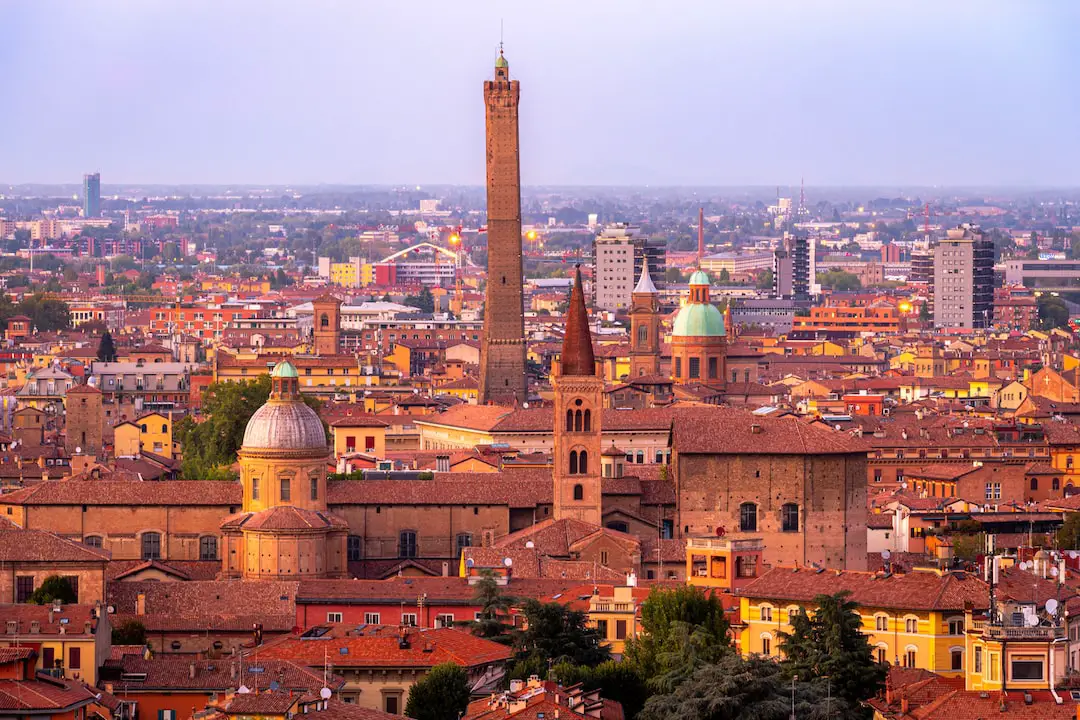
Ah, Bologna – a city that’s as rich in history as it is in its famous Bolognese Sauce. I’ve strolled through its ancient streets, marveled at its architectural wonders, and lounged in its verdant parks. It’s a place where the past and present dance a delicate tango, each step a testament to the city’s evolving beauty. Let’s dive into the architectural journey of this Italian gem, shall we?
Bologna’s architecture is a feast for the eyes, with a history that stretches back to the Etruscans. The city’s heart beats in Piazza Maggiore, surrounded by grand medieval and Renaissance buildings. But it’s not just the center that tells the tale of Bologna’s past; the city’s parks are also canvases of cultural expression. Take Giardini Margherita, for example. It’s not just a spot for a lazy Sunday picnic; it’s a showcase of landscape architecture that has evolved alongside the city.
As you wander through Bologna, you’ll notice the unique porticoes that line the streets. These aren’t just handy for keeping the rain off; they’re a symbol of Bologna’s innovative spirit. The city has over 40 kilometers of these covered walkways, and they’ve been a staple since the Middle Ages. They say necessity is the mother of invention, and in Bologna’s case, the need to house an influx of students at the university led to this distinctive architectural feature.
Speaking of the university, the University of Bologna is a cornerstone of the city’s architectural heritage. Founded in 1088, it’s the oldest university in the Western world. The buildings of the university district have a scholarly elegance that’s been maintained for centuries. It’s a place where the weight of history is palpable, and the architecture is a patchwork of the city’s intellectual legacy.
But Bologna isn’t stuck in the past. The city has embraced modernity without losing its soul. The Fiera District is a prime example, with its sleek, contemporary exhibition halls designed to host international events. It’s a stark contrast to the medieval towers and churches, yet somehow, it all fits together in Bologna’s eclectic architectural tapestry.
Now, let’s talk about the towers. The Two Towers, Garisenda and Asinelli, are Bologna’s most iconic landmarks. Leaning precariously, they’ve been defying gravity since the 12th century. They’re a reminder of a time when Bologna was a city of towers, each one a status symbol for the families who built them. Today, they stand as a testament to the city’s competitive spirit and architectural ambition.
Bologna’s religious architecture also tells a story of evolution. The Basilica di San Petronio, with its unfinished façade, is a masterpiece of Gothic architecture. Inside, it’s a cavernous space of art and devotion, with chapels that showcase the city’s religious fervor and artistic prowess through the ages.
As we’ve seen, Bologna’s architecture is a layered narrative of history, innovation, and beauty. It’s a city that has mastered the art of blending the old with the new, creating an urban landscape that’s both timeless and dynamic.
FAQs:
Q: What makes Bologna’s architecture unique?
A: Bologna’s architecture is unique for its extensive porticoes, medieval towers, and a blend of Gothic, Renaissance, and modern styles. The city’s ability to preserve its historical buildings while integrating contemporary designs sets it apart.
Q: Can visitors climb the Two Towers of Bologna?
A: Yes, visitors can climb the taller tower, Asinelli, to enjoy panoramic views of the city. However, the shorter tower, Garisenda, is not open to the public due to its severe lean.
Q: Are there guided architectural tours available in Bologna?
A: Absolutely! There are several guided tours that focus on Bologna’s architecture, ranging from historical walks through the city center to specialized tours of its modern districts.
In conclusion, Bologna’s architecture is a rich tapestry woven from centuries of history, culture, and innovation. From the medieval grandeur of its towers and porticoes to the serene beauty of Giardini Margherita, the city’s architectural evolution is a testament to its enduring spirit. Bologna invites us to explore its past, engage with its present, and anticipate its future. It’s a place where every brick and leaf tells a story, and I can’t help but feel privileged to have experienced it firsthand. Whether you’re an architecture buff, a history enthusiast, or simply someone who appreciates beauty, Bologna’s architectural landscape is sure to captivate and inspire.